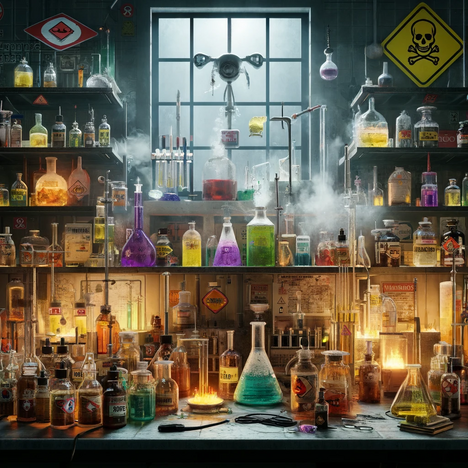Polychlorinated dibenzo-p-dioxins

The silent poison: What are polychlorinated dibenzo-p-dioxins?
Polychlorinated dibenzo-p-dioxins (PCDDs) belong to a family of highly toxic chemical compounds that are formed in the environment mainly through combustion processes. They are extremely persistent and can accumulate through the food chain, which means that they can be found in higher concentrations in meat and dairy products as well as in fish. Due to their fat solubility, PCDDs accumulate in the body fat of animals and remain there for long periods of time.
Invisible danger: the effects of dioxins on dogs
Exposure to PCDDs can have serious health consequences for dogs, as it can for humans. Due to their ability to accumulate in the food chain, dogs that consume contaminated food can accumulate significant amounts of these toxins in their bodies over time.
Harmful effects of dioxins:
- Immune system: PCDDs can weaken dogs' immune systems, making them more susceptible to infections.
- Skin problems:Dioxin exposure is linked to skin conditions such as chloracne, a severe form of acne caused by chemical exposure.
- Reproductive and developmental disorders: Dioxins can impair reproductive function and cause developmental problems in puppies.
- Cancer risk: Long-term exposure to high levels of dioxins has been linked to an increased risk of certain cancers.
Benefits? A deceptive word in this context
When discussing PCDDs in the context of dogs, there are no direct "benefits" of their presence in the environment or diet. The challenge lies in minimizing exposure to these toxic compounds and raising awareness of their potential effects.
Strategies to minimize exposure to dioxins
Given that PCDDs are ubiquitous in the environment, it may seem impossible to completely prevent their ingestion. However, there are steps dog owners can take to minimize their pets' exposure:
- Quality-conscious feeding: Choose high quality dog food that is subject to strict safety controls.
- Be careful when choosing "natural" food sources: While the idea of feeding fresh, natural foods is appealing, they should be checked for possible contamination.
- Regular veterinary check-ups: Regular check-ups can help detect early health problems that may be due to dioxin exposure.
A call for caution and awareness
The world of polychlorinated dibenzo-p-dioxins is a perfect example of how complex environmental factors can affect the health of our dogs. While there are no direct benefits of exposure to PCDDs, the real benefit lies in awareness and proactively minimizing their risk. As responsible dog owners, it is our responsibility to educate ourselves about the potential dangers lurking in our environment and take action to protect our dogs. By making conscious choices about feeding and grooming, we can help reduce the risk of harmful dioxin exposure, ensuring the well-being and quality of life of our faithful companions.
If you notice any signs of hypersensitivity or poisoning in your dog, you should see your vet immediately. We are not a substitute for a vet, but we try to be as accurate as possible. Every dog reacts differently and we recommend you get a second opinion or consult your vet if in doubt.
Stay healthy and take good care of your four-legged friend!😊